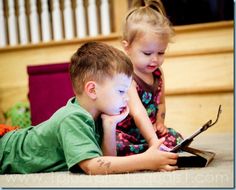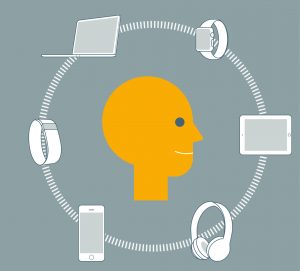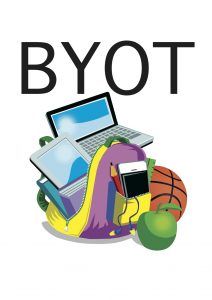Outside the School Walls
Mal Lee and Roger Broadie

The last twenty plus years reveal how successful the young of the world and their digitally connected families have been in learning with the digital informally in a naturally sustained manner – albeit outside the school walls (Lee and Broadie, 2018).
Sadly, that learning, like the success of the digitally connected families has been largely unseen.
It is time it is. and its global and historic significance is recognised, and the vital learning built upon.
Most when thinking about the young’s learning with the digital focus on the technological proficiency of the billion plus digitally connected young.
That proficiency with the current personal technologies is critical to the young’s all pervasive use and learning with the digital. However, in the total scheme of things far more important is the young, with the support of their families naturally taking charge of their learning with the technology, learning how to learn of their volition and with others, and being able to naturally sustain the learning in whatever domain/s they wish, lifelong.
Remarkably the billion plus digitally connected young have in a completely laissez faire, seemingly chaotic world in their use and learning with the digital naturally grown a suite of remarkably common capabilities. None of them have been planned, but are a natural unintended flow on from the Digital Revolution and the digital empowerment of the young. We’ve identified twenty-eight (Lee and Broadie, in press). Time and research might identify a few more, or few less.
What is important is that three quarters of the capabilities relate to the young’s learning how to learn, and only a quarter with the digital proficiency.
All are capabilities the young learn very early, well before school age and then grow throughout life.
With each child taking charge of his/her learning with the digital, and pursuing their interests and passions in addition to the common capabilities each will also have their own special capabilities, some being of a very high order.
A telling and fundamental difference between the young’s learning with the digital in and outside the school walls is that while of the school learning is constant that outside is dynamic, and naturally evolving, lifelong.
It is a significant difference, that few have noted.
In the school teaching the experts determine what is to be learned, how, by when and how it will be assessed and reported upon at the course conclusion. There is very much a beginning and an ending, and with the final assessment the sense that the learning – or at least a segment of – is completed.
In contrast the learning with the digital outside the school is decided upon and directed by the learner, learning what is desired, when and how, with there being no obvious beginning or end to the learning. It begins at birth and will likely continue to death, as the digital continues its evolution. The control and nature of the learning will evolve in harmony with the technological change, going a long way to ensuring the young naturally accommodate exponential change.
Digital proficiency
The digital proficiency of the young is probably best expressed in the reality that near 60%, soon to be 70% of the world’s young are digitally connected (Ericsson, 2016), (Futuresource, 2017) and have normalised the 24/7/365 use of the current personal technologies in most every facet of their lives and learning.
The proficiency has to do with what the young at various stages of life want to do with the digital in their daily lives now, rather than what the ‘experts’ believe should be mastered for future application.
While the level of proficiency will vary with age, interest, expertise and support the bottom line for the first time in human history over half the world’s young are digitally connected, on trend in not many years for virtually all to be connected, able to instantly access and work largely unfettered the learning and resources of the networked world.
It a stark new reality, with immense implications that most governments, bureaucrats and schools have yet to seemingly grasp.
As is the reality that the young of the world have learnt – and will forever on learn – what they want, not simply what those in authority desire.
Moreover, twenty plus years reveals the digitally connected young will continue to grow the capabilities they desire outside the school walls – regardless of what governments or schools believe is important.
In their learning, they have demonstrated from around age three their ability to readily work the core functionality of the current personal and family digital technologies (Chaudron, 2015) – the smartphones, tablets remote controls, digital peripherals, games consoles, digital and video cameras, digital TVs, PVRs, home entertainment systems and the increasingly integrated family ecosystem.
Well before they can read, or start school they have learned to navigate the networked world and use the apt medium to access the desired functions.
Moreover, they have learnt to use the various digital communications facilities, largely toll free, strongly favouring the latest video communication technologies.
Over the last twenty plus years they have also learnt to use the new media creatively in the pursuit of their passions, unbounded by the traditional ways, and once again to do so from a very early age. You’ve undoubtedly observed the many diverse and creative ways your own children or grandchildren have used the technology.
Contrary to the views expressed by many politicians and older members of society the research affirms (Lenhart, et.al, 2013). (Lee and Broadie, in press) teens have for many years been tech-savvy. Invariably they – operating as they are at the cutting edge – understand the dangers well before their elders and the policy makers. That said the very young, with still forming minds require family guidance, and in general terms are not cognitively ready to use the Net unsupervised until around ten (Strom and Strom, 2010).
Learning how to learn
In examining the learning with the digital outside the school walls over the last twenty plus years what stands out is the young’s ability to take charge of their learning, to do so from the outset, to direct and individualise that learning and to learn how to learn (Lee and Broadie, 2018).
And as indicated to do so in a naturally sustained manner lifelong.
With their strong digital mindset, and rising expectations the digital technology underpins all their learning. Their first step is to use the digital and the connectivity, unlike many older folk who default to the traditional ways.
Allied is their ability to teach other folk, particularly those older to use the new technology, and naturally contribute to the family’s learning.
They very quickly – well before formal schooling – become self-learners, with that vital educational ability to shape their learning with the digital, underpinning all they do.
In being empowered and trusted, and given the freedom to use the technology largely unfettered they soon learn what they want to learn, how and when, and vitally quickly identify when they need to improve that capability and how best to do so. They very quickly, from the mid 90’s onwards, and from early life learned the art of improving the learning by themselves, with the aid of the technology or in collaboration with the family, peers and social network (Lee and Broadie, 2018). As the Pew research notes (Purcell, et.al, 2012) Google, YouTube, Wikipedia and the peers are called upon far more than any teacher.
And they don’t need to be tested! Like all of us they reflect on their performance and when desired improved it.
In being free to use the digital as desired the young soon learn to use the technology and the Net to pursue their interests and passions, enhancing their learning in the area/s of interest, to an often very considerable extent (Ito, et.al, 2013). It matters not if it is pursuing an interest in contemporary music, astronomy, blogging, fashion design, apiary, drone piloting, professional gaming or coding apps. While kids have always had this freedom in their informal learning the parent’s provision of the technology overnight removed the traditional adult gatekeepers and allowed them to draw upon resources of the Net, the moment desired.
It moreover enabled them to decide the best approach to the learning. They – and not an adult – decide when to employ a discovery based, didactic or highly repetitive learning approach.
Similarly, each child chooses the digital tools they needed for the task at hand.
From the mid 90’s the adolescents and in time the very young – like all of us – soon learned the unwritten ways of the digital and online worlds, the parameters to work within, the universal mores to be observed and when they had crossed the boundaries.
Allied, in taking charge of the use of and learning with the digital the young from the 1990s have made extensive and increasing use of the connected world and human networking, it long being a natural, almost invisible part of their normalised use of the digital. Unwittingly, and initially unseen, the young increasingly build the number of contacts they can readily call upon for all manner of support when desired.
Very quickly the young abandoned the traditional academic boundaries used in the schools, and adopted a more integrated approach to learning, drawing on whatever areas of learning thought suitable (Lee and Broadie, in press).
Largely unseen the young also learned to make ever greater use of their visual intelligence in all they did. This was particularly apparent in the two and three-year old children’s use of the touchscreen mobile technology (Chaubron, 2015), but it was – as you might have noted – apparent at all age levels and in the burgeoning use of video and images.
From the mid 2000’s the young increasingly grew the art of mobile learning, and using the resources in their hands, 24/7/365, just in time and in context. That preference for the mobile technologies is evidenced even when at home, where desktops in designated rooms gather dust. The young from very early in life don’t see the need to learn only in a physical place; unlike governments and schools that remain site fixated.
What should be stressed is that these are all vital educational capabilities in a rapidly evolving, uncertain and complex world, where it is essential to know how to learn with the digital, lifelong.
They might not feature in government education priorities but they are the vital generic capabilities the great educational thinkers have been arguing schools should develop for aeons.
Enhancing the learning
Over the last quarter of a century the young of the world have in historic terms learned to learn with the digital remarkably quickly and well, not only continually enhancing their digital proficiency but also their ability to take charge of their own learning with the technology.
However, the exponential digital evolution, with its increasingly powerful, sophisticated, integrated and complex technology and practises, and their global impact demands the world’s young continually enhance their capability.
Much will on current trends will continue to happen naturally. As the technology evolves so naturally will the requisite personal learning.
But there is the opportunity to lift the learning with the digital even higher, particularly now we better understand what has been learned and how.
The natural inclination is to look to schools to provide that enhancement.
Sadly, twenty plus years of history (Lee and Broadie, 2018) suggests aside from some exceptional schools that enhancement is not likely to come from them. Not only aren’t most of a mind to collaborate with the families, nor are culturally ready to embrace the five critical conditions required but all are still operating in linear, hierarchical Industrial Age organisations that lack the agility to accommodate accelerating change – even if governments allowed the schools to change.
Most lag so far behind where the young are at attitudinally and with the cutting-edge technologies all they would do is impede the young’s enhancement.
We accept that governments and most educators would not be of that view.
But the reality is that governments and schools that ban or markedly constrain the in-class use of the student’s mobile technologies and by default throw the responsibility to the family are not likely to provide any worthwhile assistance.
The enhancement most likely will come from the family building upon its better understanding the learning with the digital, its increasingly powerful digitally based ecosystem and it more deliberately growing the learning. It is its better understanding of how to learn, providing an increasingly sophisticated and powerful ecosystem, and as family more openly addressing the enhancement that will bring the improvement.
It will hopefully in time be the digitally connected families of the world shouting from the rooftops what they have achieved that will open society’s, government’s and school’s eyes to what has been achieved and what is possible.
Conclusion
The best learning practice with the digital has for years been evidenced in the digitally connected families of the world – and most assuredly not in its Industrial Age schools.
It is appreciated this view runs counter to the in-school and government thinking but it is time for educators and governments to look outside the school walls and recognise the natural sustained learning with the digital that has occurred, and is occurring daily, with most of the world’s young – outside the school.
With the digital it is imperative to examine what has happened, is happening and the major global trends, not simply at what governments want to happen.
In the natural, sustained learning with the digital most schools and governments have long been dealt out of the main game.
- Chaudron, S (2015) Young Children (0-8) and Digital Technology Luxembourg, European Commission JRC and Policy Reports 2015 –http://publications.jrc.ec.europa.eu/repository/handle/JRC93239
- Ericsson (2016) Ericsson Mobility Report 2016 Ericsson November 2016 – https://www.ericsson.com/assets/local/mobility-report/documents/2016/ericsson-mobility-report-november-2016.pdf
- Ericsson (2017) Ericsson Mobility Report Ericsson November 2017 – https://www.ericsson.com/assets/local/mobility-report/documents/2017/ericsson-mobility-report-november-2017.pdf
- Futuresource (2017) Unpublished market data provided personally.
- Ito, Mizuko, Kris Gutiérrez, Sonia Livingstone, Bill Penuel, Jean Rhodes, Katie Salen, Juliet Schor, Julian Sefton-Green, S. Craig Watkins. (2013). Connected Learning: An Agenda for Research and Design. Irvine, CA: Digital Media and Learning Research Hub.
- Lee, M and Broadie, R (in press) Digitally Connected Families. And the Digital Education of the World’s Young, 1993 – 2016, Armidale, Australia, Douglas and Brown – http://douglasandbrown.com/publications/
- Lenhart, A, Madden, M, Cortesi, S, Gasser, U, and Smith, A Where Teens Seek Online Privacy Advice Pew Internet August 15 2013 – http://www.pewinternet.org/2013/08/15/where-teens-seek-online-privacy-advice/
- Purcell, K, Rainie, L, Heaps, A, Buchanan, J, Friedrich, A, Jacklin, A, Chen, C and Zickuhr. K How Teens Do Research in the Digital World. Pew Internet November 1 – 2012 – http://www.pewinternet.org/2012/11/01/how-teens-do-research-in-the-digital-world/
- Strom, R.D and Strom, P.S (2010) Parenting Young Children. Exploring the Internet, Play and Reading, Charlotte, Information Age Publishing








